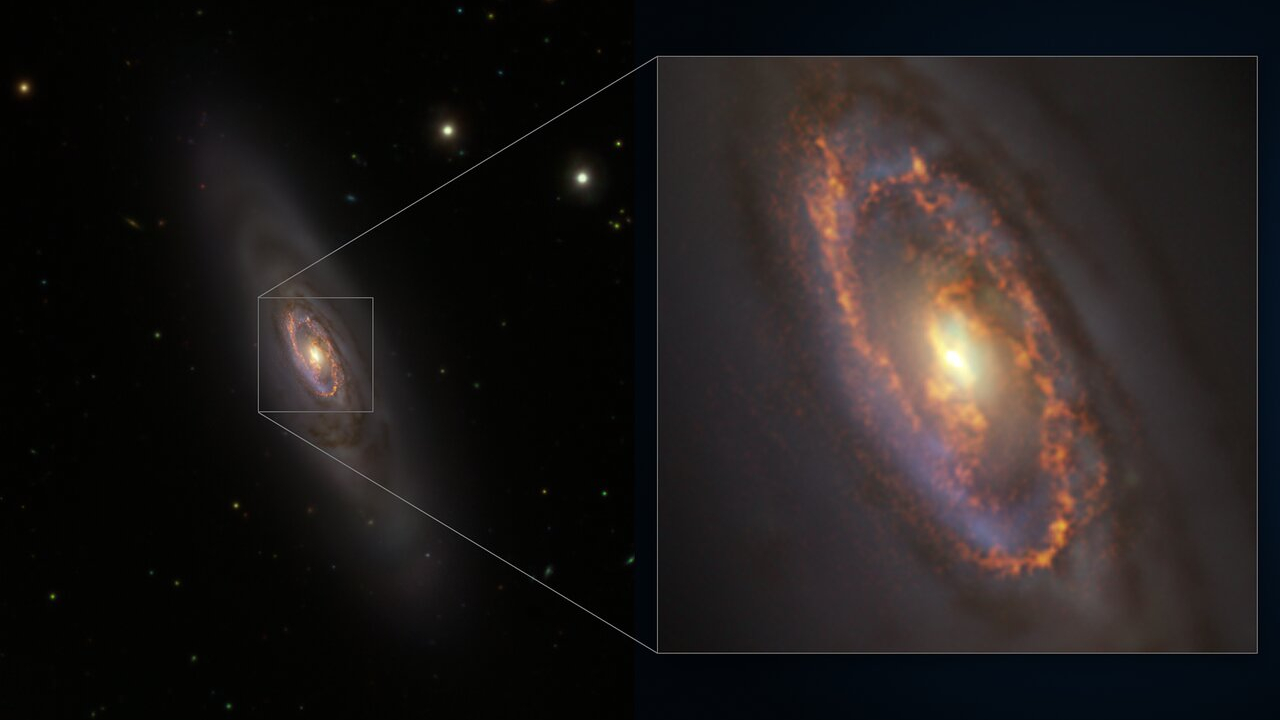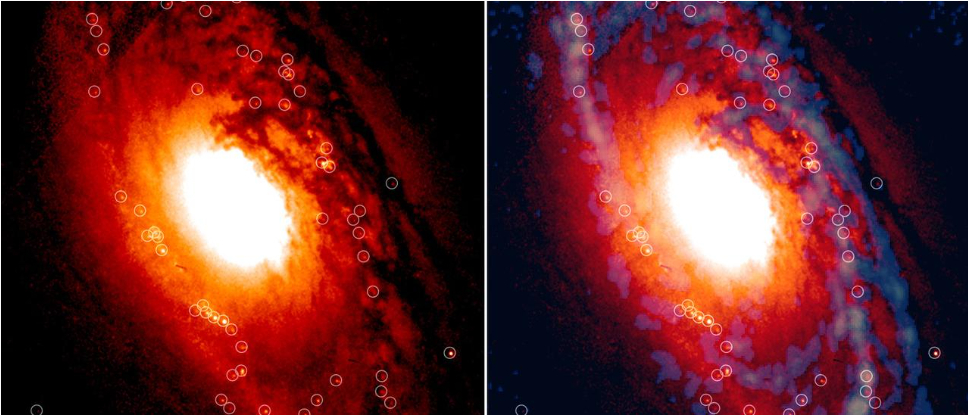Astronomers spot unusually synchronized star formation in ancient galaxy for 1st time
"Even if old, NGC 1386 keeps rejuvenating itself."

Astronomers have spotted thousands of young stars huddled around the center of an ancient galaxy, all of which formed nearly simultaneously 4 million years ago. This observation marks the first time such synchronized star formation has been spotted in an old galaxy, and challenges the idea that star formation declines as galaxies age.
The newfound star clusters skirt the heart of NGC 1386, a spiral galaxy swirling roughly 53 million light-years from Earth in the constellation Eridanus. Researchers led by Almudena Prieto of Spain's Instituto de Astrofísica de Canarias identified 61 groups of young stars, which trace the 1 kiloparsec-wide blue ring seen in the image above, and found all of them sported similar masses, ages and sizes despite being spatially isolated.
"All of these clusters are distributed like pearls on a ring around the center of the galaxy," Prieto said in a recent news release. "Surprisingly they are all alike, which gives the idea that they were created at the same time, in a synchronized event."
Observations of the blue ring with the Hubble Space Telescope and the VLT Survey Telescope in Chile show the star clusters are fed by long filaments of gas and dust that ferry precious star-forming material — such as molecular hydrogen — from the galaxy's outer disk all the way to its center.
Related: Stare into the 'blood-soaked eyes' of 2 spooky galaxies in new Hubble, JWST images (video)
The researchers did not detect any companion galaxies swirling nearby NGC 1386, suggesting these filaments are likely the only source of star-forming material for the galaxy, according to another news release from the European Southern Observatory (ESO), which hosts the VLT Survey Telescope at its Paranal Observatory in Chile's Atacama Desert.

These findings add to the growing body of recent evidence certain old galaxies are capable of host bursts of star formation, contrary to the majority of historical observations that have shown that the rate of star formation declines as galaxies age, suggesting their supplies of star-forming gas and dust shrinks. Despite its age, "this galaxy has organized itself to obtain the required supply from its outer zones, within its stellar disk," said Prieto.
Breaking space news, the latest updates on rocket launches, skywatching events and more!
"A major event in the disk may have caused the onset of cluster formation simultaneously in the ring," the researchers wrote in a paper published earlier this year in the Monthly Notices of the Royal Astronomical Society. That consequential event may have been a density wave that passed through the galaxy disk, which would have triggered the gas in its wake to compress and kickstart star formation.
Prieto and colleagues also detected a second ring around the center, depicted in the above image as golden, that traces roughly 70 identical pockets of gas, suggesting the galaxy is not finished forming stars yet. The team posits a second burst of similarly synchronized star formation is imminent, possibly in the next 5 million years or so.
"Even if old, NGC 1386 keeps rejuvenating itself," the ESO news release says.
Join our Space Forums to keep talking space on the latest missions, night sky and more! And if you have a news tip, correction or comment, let us know at: community@space.com.

Sharmila Kuthunur is a Seattle-based science journalist focusing on astronomy and space exploration. Her work has also appeared in Scientific American, Astronomy and Live Science, among other publications. She has earned a master's degree in journalism from Northeastern University in Boston. Follow her on BlueSky @skuthunur.bsky.social
